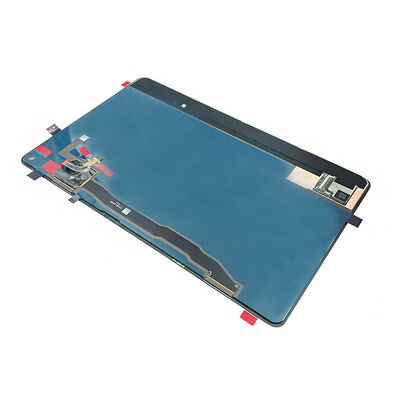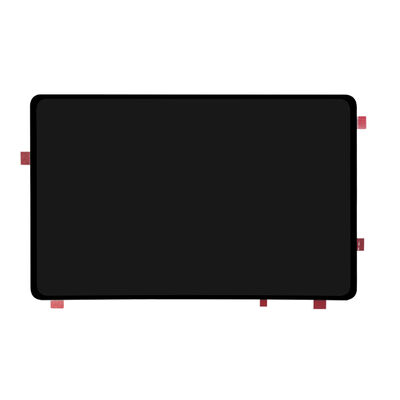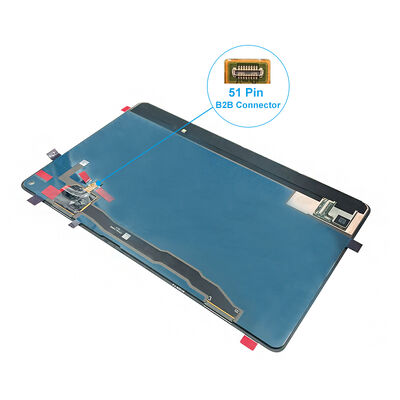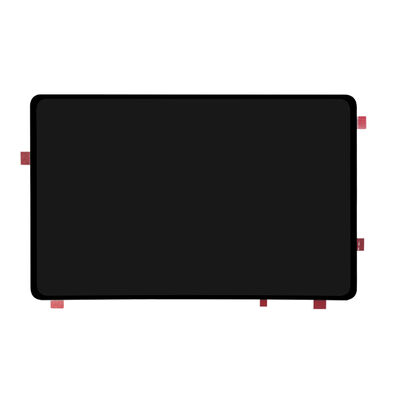Tất cả sản phẩm
-
Màn hình LCD TFT
-
Màn hình cảm ứng Màn hình TFT
-
Màn hình TFT tròn
-
Hiển thị màu TFT
-
Mô-đun hiển thị AMOLED
-
Micro OLED Hiển thị
-
Loại thanh TFT
-
Màn hình TFT vuông
-
Màn hình LCD độ sáng cao
-
Màn hình LCD COB
-
Ánh sáng mặt trời có thể đọc được TFT
-
Màn hình UART TFT
-
Mô-đun màn hình LCD
-
Màn hình PMOLED
-
Hiển thị giấy
-
Màn hình kỹ thuật số LED
-
Bảng điều khiển cảm ứng điện dung
11.2 Inch High Resolution AMOLED Display Module with oncell touch, 2560*1536 Dots and 450c/d Brightness
| Nguồn gốc | Trung Quốc |
|---|---|
| Hàng hiệu | HuaXin |
| Chứng nhận | ISO14001/ ISO9001/IATF16949 |
| Số mô hình | HX20QBC73.A |
| Tài liệu | HX20QBC73.A SPEC.pdf |
| Số lượng đặt hàng tối thiểu | 180 |
| Giá bán | $108 |
| chi tiết đóng gói | vỉ+hộp bọt+túi bong bóng+bên trong carton+master carton |
| Thời gian giao hàng | 6week ~ 8Weeks |
| Điều khoản thanh toán | T/T |
| Khả năng cung cấp | 50k mỗi tháng |

Liên hệ với tôi để lấy mẫu miễn phí và phiếu giảm giá.
WhatsApp:0086 18588475571
wechat: 0086 18588475571
Ứng dụng trò chuyện: sales10@aixton.com
Nếu bạn có bất kỳ mối quan tâm nào, chúng tôi cung cấp trợ giúp trực tuyến 24 giờ.
xThông tin chi tiết sản phẩm
| Công nghệ hiển thị | Hiển thị hd | Tên | Màn hình LCD OLED |
|---|---|---|---|
| Kích cỡ | 11.2 " | Nghị quyết | 2560RGB*1536 |
| Độ sáng | 450c/d | Giao diện | MIPI 2 cổng |
| Lái xe IC | RM692H0 |
Bạn có thể đánh dấu vào các sản phẩm bạn cần và liên lạc với chúng tôi trong bảng tin.
Mô tả sản phẩm
HX20QBC73.A is 11.2 inch amoled display module with oncell touch Display color: 1.07B (RGB x 10 bits) and Display format: 11.2” (2560RGBx1536) and Pixel arrangement: Real RGB
Display Interface: MIPI 2-port D-PHY TP Interface: SPI Driver IC : RM692H0 , Touch screen: On-cell; Touch IC: GT6975P
Product Parameter
| Part No. | HX20QBC73.A |
| Display Size | 11.2 inch AMOLED display |
| Outline Size (mm) | 249.22*154.08 |
| AA Size (mm) | 244.22*146.53 |
| Resolution | 2560RGB*1536 |
| Interface | MIPI 2-port |
| Brightness | 450c/d |
| View Angle | all |
| Driving IC | RM692H0 |
| Touch screen | On-cell |
Product Picture
![]()
![]()
![]()
![]()
Drawing & Pin Definition
OLED Product Knowledge
OLED Advantages:
- Lighter and thinner than LCDs
- High contrast ratio
- High color saturation
- Lower power consumption
OLED Disadvantages:
- AMOLED is more expensive than LCD and TFT
- Lifetime is shorter than LCD and TFT
Company Information
Huaxin Advantage:
- Factory base located at inland city which has cost effective
- Most advanced new equipment which can keep quality stable
- Most processes using fully automatic equipment which has efficiency and stable quality
- Professional engineers and production leaders with 20+ years experience in LCD field
- Self design for customized product
Our Certificates:
- ISO14001
- ISO9001/IATF16949
- SGS of LCD module
Production Capacity
| Annual Production Capacity | 2021 (Current) | 2022 (Goal) | 2023 (Challenge) | 2024 (Challenge) | 2025 (Challenge) | Remark |
|---|---|---|---|---|---|---|
| LCD Production Capacity | 4.5 | 9 | 9 | 9 | 9 | Unit: thousands of logarithms/Day |
| LCM Production Capacity | 70 | 150 | 300 | 450 | 450 | Unit: Thousand piece/Day |
| Backlight Production Capacity | 100 | 200 | 300 | 500 | 500 | Unit: Thousand piece/Day |
| OLED Production Capacity | 10 | 20 | 30 | 40 | 50 | Unit: Thousand piece/Day |
Product Application
- Safety box & instrument
- Lock & smart home
- Transmitter & watch
- Watch & radio
- Collimator & navigator
AMOLED Display Characteristics
- Self-Emissive Pixels
- High Contrast Ratio
- Color Accuracy and Vibrancy
- Wide Viewing Angles
- Power Efficiency
- Thinness and Flexibility
- Fast Response Time
Power Efficiency Comparison
1. Power Consumption:
AMOLED displays consume power on a per-pixel basis, meaning that pixels displaying black or dark content consume very little power, while pixels displaying bright or white content consume more power. LCD and LED displays require a constant backlight that consumes power regardless of the displayed content.
2. Content Dependency:
AMOLED displays are more power-efficient for content with dark or black areas, as individual pixels can be turned off to save power. LCD and LED displays consume a relatively constant amount of power as the backlight remains active.
3. Brightness Control:
AMOLED displays can dynamically adjust pixel brightness for better efficiency in low-brightness scenarios. LCD and LED displays typically have fixed backlight brightness, resulting in higher power consumption.
4. Display Size:
AMOLED displays tend to be more power-efficient for smaller sizes as consumption scales with pixel count. Larger LCD/LED displays may require more power-hungry backlights, reducing efficiency compared to same-size AMOLED displays.
Sản phẩm khuyến cáo










